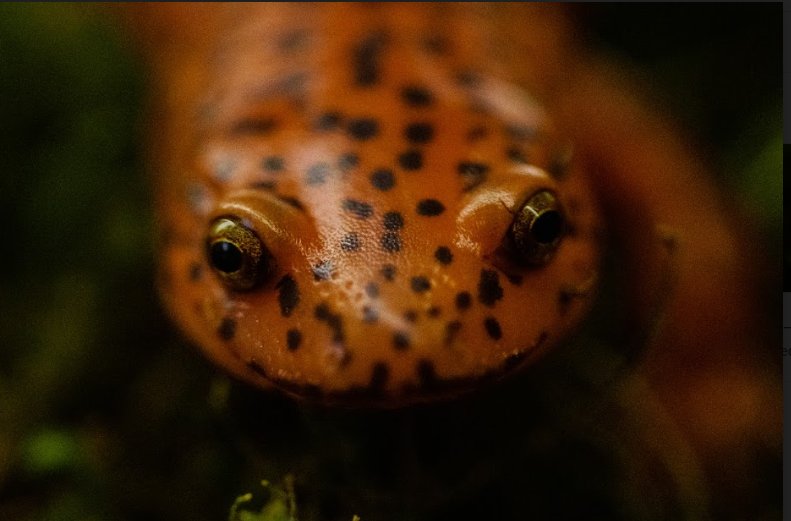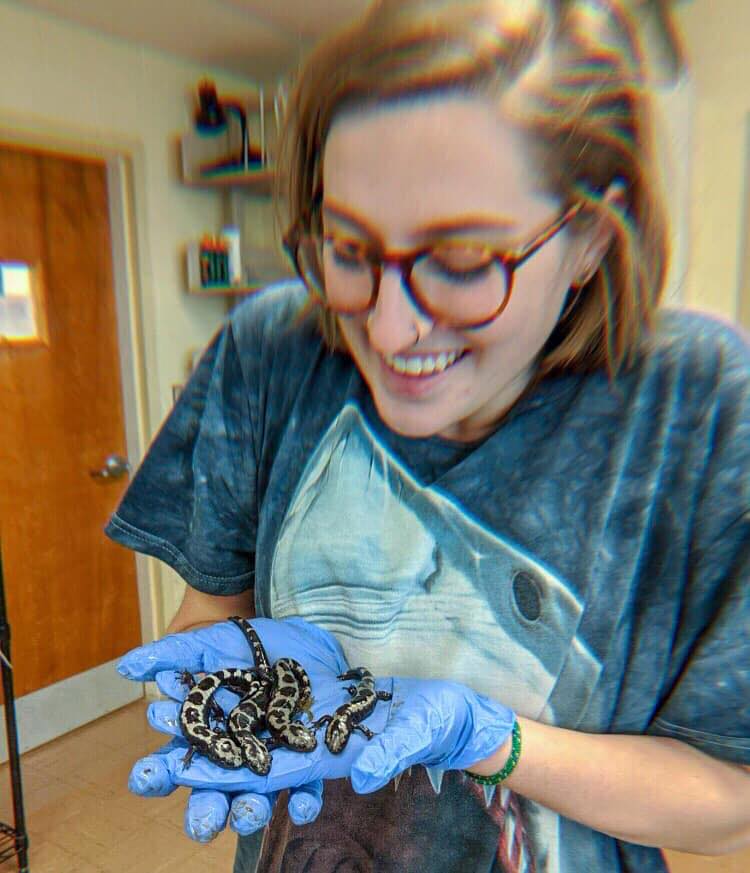Asbury Biology Professor and Students Publish eDNA Research
October 21, 2022

In August, Dr. Ben Brammell, professor of biology at Asbury University, published research findings in the journal, Herpetological Conservation and Biology. Coauthors included four Asbury University undergraduates (Florene Bell ’19, Angie Flores Madrid ’19, Chi Jing Leow ’20, Dr. Ronald Sams ’17), an Asbury alumnus (Dr. Kenton Sena ’12, University of Kentucky), as well as collaborators Dr. Thomas Maigret (University of Kentucky) and Dr. David Peyton (Morehead State University). The research team developed molecular tools to detect DNA in stream water shed from two species of salamanders using environmental DNA, an emerging technique that is transforming the manner in which ecological studies are conducted. View the paper here: http://www.herpconbio.org/Volume_17/Issue_2/Bell_etal_2022.pdf.
Dramatic declines in global amphibian populations is a serious environmental issue. “Loss of habitat, climate change, and chytrid fungus are the primary factors that threaten amphibians at this time, with some studies reporting that 40% of amphibian species are in danger of extinction,” Brammell said. “One of the focuses of our research is developing tools to enable detection of amphibian species through the application of molecular biology techniques. These methods promise to greatly enhance the efficiency and lower the cost of monitoring studies.”
Environmental DNA involves collection of a water sample which is then filtered to capture DNA floating within it. The DNA is extracted and molecular biological techniques are utilized to determine which species’ DNA is present within the sample. The number of published studies utilizing eDNA has increased exponentially since its inception in 2008, and the technique promises to revolutionize the manner in which ecological field surveys are conducted.
Coauthor Dr. Kenton Sena ’12 is a Lecturer in the Lewis Honors College at the University of Kentucky where he maintains an innovative research program. “Dr. Brammell’s salamander research program is advancing scientific understanding of salamander detection in freshwater ecosystems, developing robust molecular tools that can be used to better understand the distribution of specific salamander species,” Sena said. “In the context of climate change and other stressors challenging amphibian populations, this research will provide another important tool to support conservation efforts for these species,” he said.
Today, undergraduate research is a key component of a successful undergraduate career in the sciences, and these students have capitalized on their experience at Asbury. Dr. Ronald Sams ’17 graduated from veterinary school (Auburn University) in 2022 and serves as a Veterinarian in the U.S. Army in Washington State. Florene (Gabby) Bell ’19 works as a Lead Laboratory Scientist at Solaris Diagnostics in Nicholasville, Kentucky.
“Dr. Brammell made sure to teach as much as possible that would help in a real-world career,” Bell said. “Upon graduating, I was able to get a great job, where I was promoted to Lead Laboratory Scientist within one year.”
Further education has taken other coauthors around the world. Chi Jing Leow ’20 is pursuing an M.S. in biology at Southeastern Louisiana University, focusing on conservation biology and the use of molecular techniques to address ecological questions. Angie Flores Madrid ’19 is pursuing an M.D. from the Universidad de La Plata in Argentina. Her research interests include molecular biology and the conservation of marine organisms.
“Dr. Brammell truly has impacted my career through inspiring me to become more passionate about research,” Madrid ’19 said. “I also am considering a Ph.D. in molecular biology next year along with continuing the pursuit of my M.D.”

The 11 new laboratory spaces in the Walt and Rowena Shaw Collaborative Learning Center allow students to explore specialties like eDNA research, cell and molecular biochemistry, ecology and environmental science, physics, organic chemistry, inorganic chemistry, instrumentation, biology preparation, chemistry preparation, and collaborative innovation — all with the expert mentorship of faculty.
Brammell’s passion for biology began at a young age. “As a child, I was obsessed with animals,” he shared. “My bedroom always had a collection of organisms including salamanders, fish, snakes, frogs, and even a caiman named Eli (a classroom pet that I babysat) that predictably bit me. When as a child I learned that a job existed referred to as a “biologist” in which your primary role was to study animals, I was surprised people existed who didn’t want to do that,” Brammell said.
“I love getting to work with our students,” Brammell continued. “The most rewarding part of my career is getting to observe students go through a transformation from enthusiastic but inexperienced young people to competent colleagues that share an interest in and love for the natural world. Partnering with them in research is extremely rewarding.”
The Shaw School of Sciences offers 14 majors and six minors, including biology, chemistry, and physics: https://www.asbury.edu/about/offices/schools/science-health-math/.